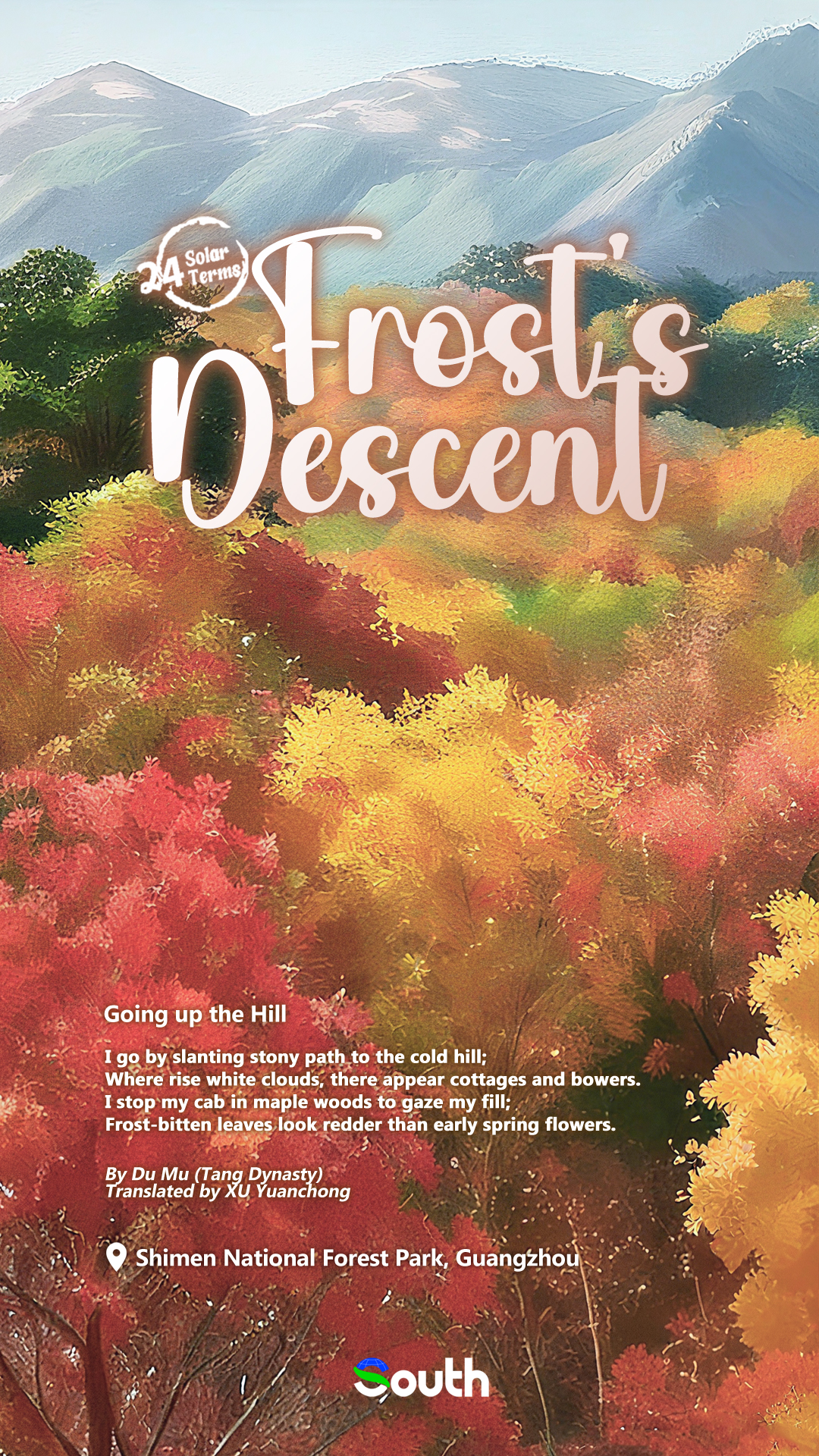
As Frost's Descent (霜降)—the last solar term of autumn—arrives on October 23, a noticeable chill sweeps through Guangdong, prompting residents to reach for warmer clothing. While southern China rarely sees actual frost this early, the dip in temperatures signals a seasonal shift. With highs of 18–21°C and scattered drizzles forecasted for parts of the province, the crisp air carries a hint of autumn's approach.
The term "Frost's Descent" originates from ancient observations of dew condensing into ice crystals as temperatures plunge overnight. Contrary to its name, frost doesn't "fall" but forms when water vapor freezes on surfaces—a phenomenon more common in northern China but now mirrored in Guangdong's cooler mornings. This period is marked by significant daytime-nighttime temperature swings, often exceeding 10°C.
Crimson Canopies and Cultural Rituals
As landscapes transition from green to gold and scarlet, Frost's Descent offers one of nature's most dazzling displays: vibrant red foliage. The poet Du Mu once wrote, "Frosted autumn leaves outshine February flowers in redness," capturing the spectacle of maple leaves deepening in hue after frost's touch. In Guangdong's mountainous areas like Shaoguan, hiking to admire this kaleidoscope of colors has become a cherished tradition, blending appreciation of nature with gentle exercise suited to the cooler weather.
Beyond leaf-peeping, customs like eating persimmons (believed to fortify against colds) and admiring chrysanthemums, revered as the "flower of longevity," thrive during this period. These practices reflect a broader cultural emphasis on harmonizing with nature's rhythms. As one folk saying goes, "Nourishing all year is not as good as nourishing during Frost's Descent," underscoring the significance of seasonal transition in daily life.
Health Tips for a Seasonal Transition
With the sharp temperature fluctuations, Traditional Chinese Medicine (TCM) experts advise focusing on "warming the body while clearing internal heat". Key recommendations include protecting the lower back and joints from damp cold, a common trigger for ailments like "old cold leg" in seniors, and opting for moderate outdoor activities like brisk walking or tai chi to boost circulation without overexertion.
Dietary habits also shift toward gentle nourishment. Foods like chestnuts, pears, duck, and radishes are prioritized for their moistening and spleen-strengthening properties. TCM practitioners this year caution against overusing warming ingredients like lamb or spicy hotpot, suggesting balanced alternatives such as pumpkin-chestnut chicken soup or pear and lily tea to avoid dryness-related discomfort.
Author | Feng Huiting
Poster | Feng Huiting
Editor | Wei Shen, James Campion, Shen He
















